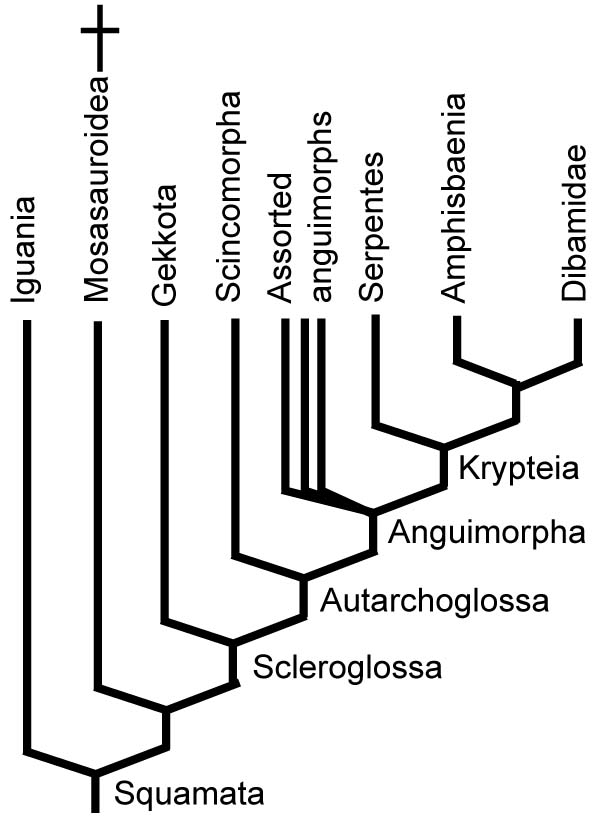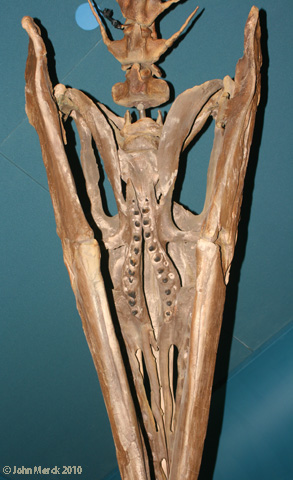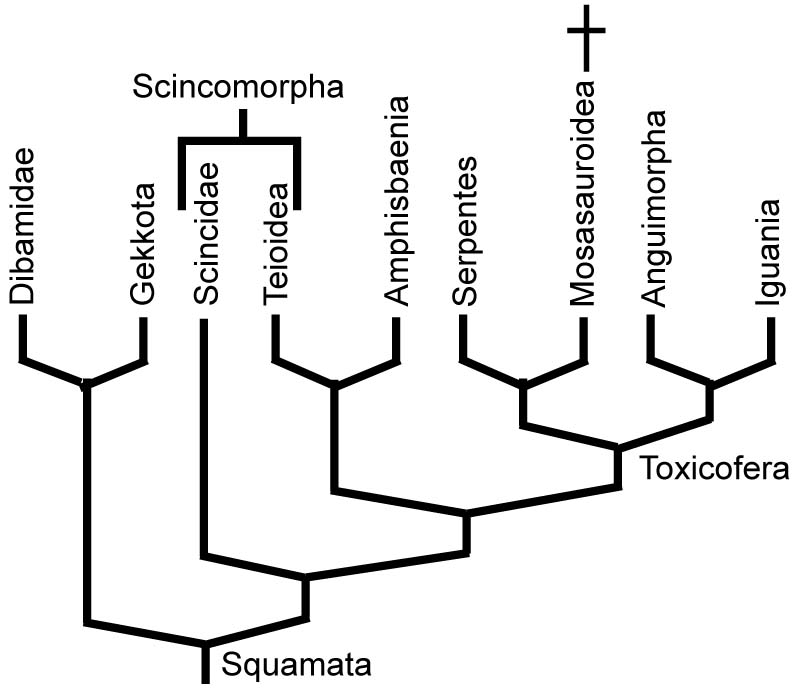Squamate superlatives: mosasaurs and snakes
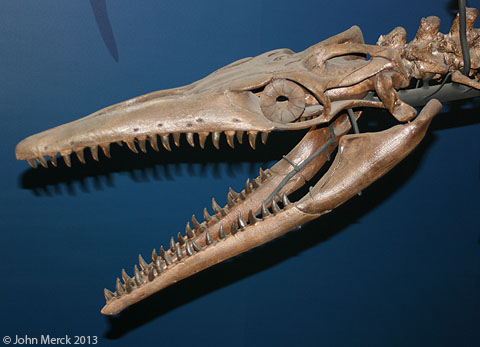
Plotosaurus bennisoni
Mosasauroidea: (Cretaceous)
Mosasaurs, a particularly spectacular scleroglossan group, appeared and thrived in the second half of Cretaceous, but were extinguished by K-T extinction. During that interval, they ranked among the oceans' dominant predators. Mosasaurus was the first fossil reptile to be studied scientifically by Georges Cuvier, who identified it as a lizard.
A look at the quadrate of Tylosaurus (right) clearly shows the apomorphic squamate quadrate. Other interesting mosasaurian features include:
- Transformation of the limbs into flippers
- Elongation of the snout
- Retraction of the nares
- Development of a distinct hinge joint at the mid-length of the jaw.
- Organization of the palatal teeth into a single stout row.

Opetiosaurus buccichi
All agree that mosasaurs are monophyletic and derived from "Aigialosaurs," a paraphyletic group of semi-aquatic medium-sized scleroglossans. Their close relatives are Dolichosauridae, containing medium-sized marine scleroglossans with long necks.
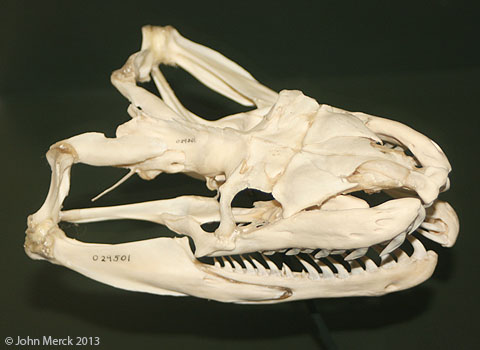
Serpentes:
(Late Jurassic - Rec.) The most subtle of beasts.Rather than giving a synapomorphy list, we will note major evolutionary trends:
- Limbs reduced or absent.
- Lidless eyes protected by a transparent scale.
- A unique pattern of rods and cones in the retina resulting in a reduction of color vision (typically well-developed in sauropsids.)
- External ear opening lost.
- The temporal region is long in comparison to the snout (a condition found in other "head hunters" like aistopods.)
- Braincase reinforced anteriorly by laterosphenoid ossification.
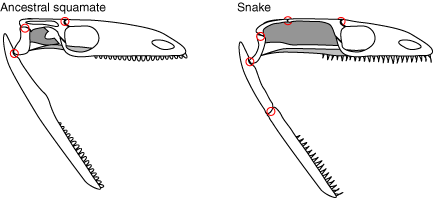
- Bones of the dermal skull roof and braincase fuse into a solid cylindrical unit.
- The quadrates, palate bones, maxillae and premaxillae become very loose and mobile, allowing manipulation and swallowing of large food items.
- The supratemporal, the skull bone to which the quadrate attaches, also becomes mobile with respect to the braincase.
- The teeth of the palate are organized into a pair of rows.
- The jaws are jointed at their mid-length and flexible, and in most cases, the two sides do not connect in front, allowing swallowing of even larger objects.
The comparison of the skulls of the Nile monitor lizard and reticulated python (a snake showing a relatively ancestral serpentine morphotype) underscore these differences.
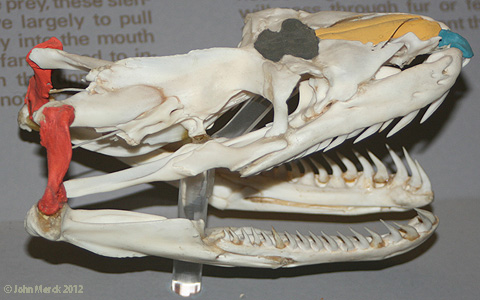
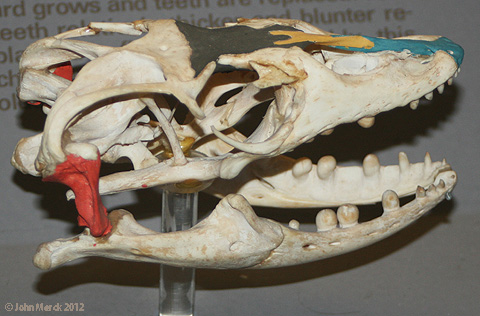
Nile monitor (left) and reticulated python (right) with premaxillae (blue), nasals (yellow), frontals (brown) and quadrates (red) highlighted.
These trends are even more pronounced in derived snakes like vipers.
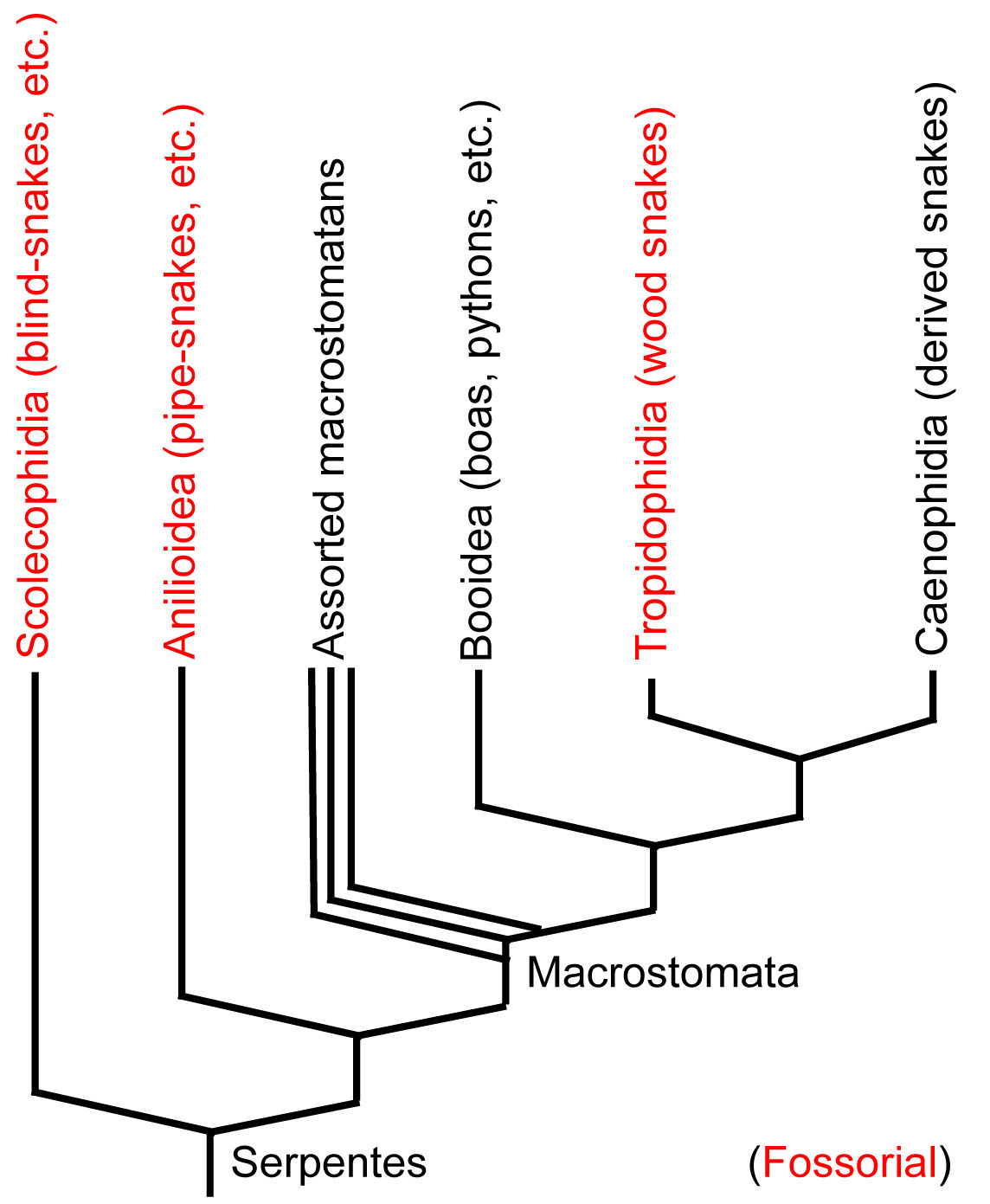 The ancestral condition of snakes: Two hypotheses have been proposed, both of which address snakes odd sensory systems:
The ancestral condition of snakes: Two hypotheses have been proposed, both of which address snakes odd sensory systems:
- The aquatic hypothesis: The ancestral snake's visual system was modified for the lower lighting underwater. Loss of the tympanum reflects lack of need for impedance-matching ear underwater.
- The fossorial (burrowing) hypothesis: The ancestral snake's visual system was reduced in an ancestor that mostly lived underground and had little to see. Reduction of tympanum reflects advantage, underground, of picking up vibrations with jaw.
Basal snakes: Proponents of the fossorial hypothesis derive comfort from the cladogram of living snakes.
- The basal branches of the snake tree, including Leptotyphlops, the blind snake and Cylindrophis, the pipe-snake are definitely fossorial.
- Although their skulls definitely display the derived features of snakes, they definitely lack the extreme modification of more derived snakes. (See Cylindrophis)
- These snakes lack the large flexible jaws and jaw-articulations characteristic of the "big-mouthed" macrostomatan snakes.
Amphisbaenians and skinks, also with fossorial adaptations, have both been proposed as sister taxa of snakes.
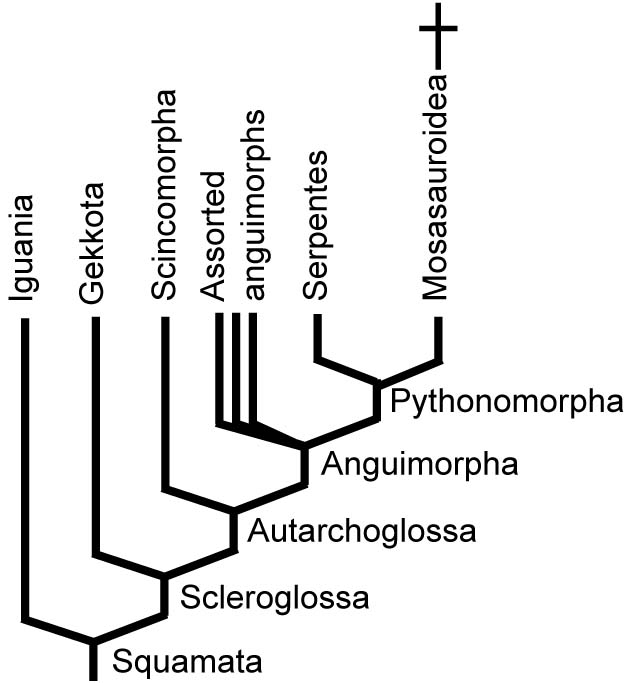
- A single row of stout palatal teeth
- Mobile joint at the mid-lenght of the jaw.
- Reduction of limbs and limb girdles.

Pachyrachus problematicus
- they were definitely marine
- they retained small but functional hindlimbs.
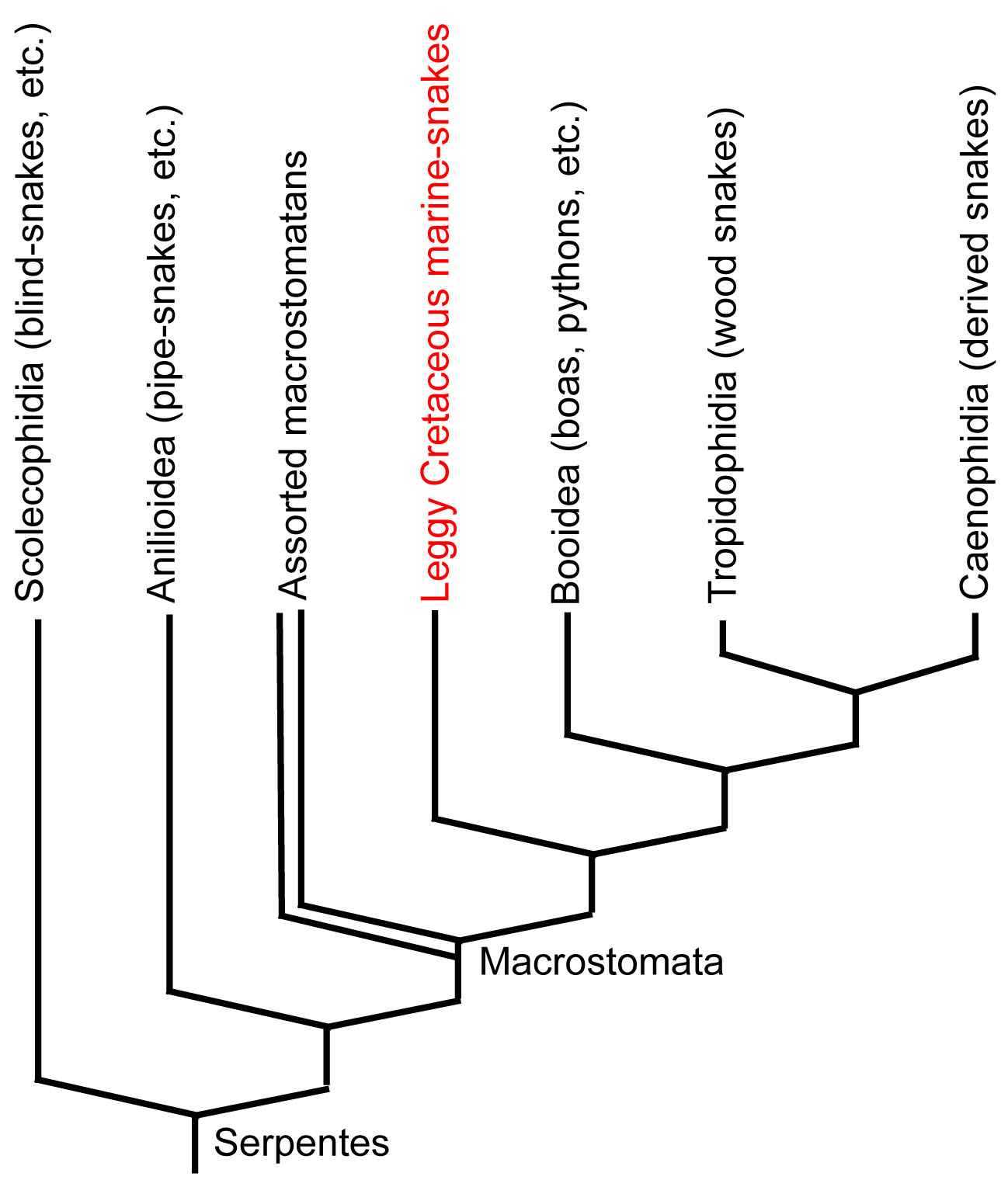 Their skulls proved to have the derived characters of macrostomatan snakes. Thus, despite the presence of legs, most cladistic analyses continue to place them well within the crown of living snakes. Apparently the presence of legs in them is a reversal. Strange! Of course, if they are derived snakes then they do not represent the ancestral condition.
Their skulls proved to have the derived characters of macrostomatan snakes. Thus, despite the presence of legs, most cladistic analyses continue to place them well within the crown of living snakes. Apparently the presence of legs in them is a reversal. Strange! Of course, if they are derived snakes then they do not represent the ancestral condition.
More recently, Caldwell et al., 2015 have revealed leggy snakes from the Late Jurassic. These, in contrast, to Pachyrhachis, occupy a basal position in Serpentes.
